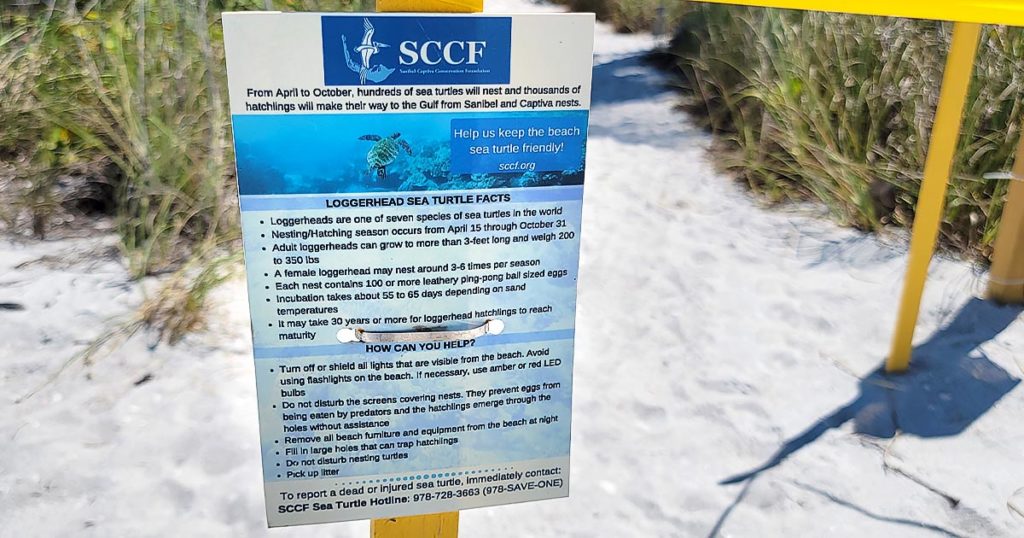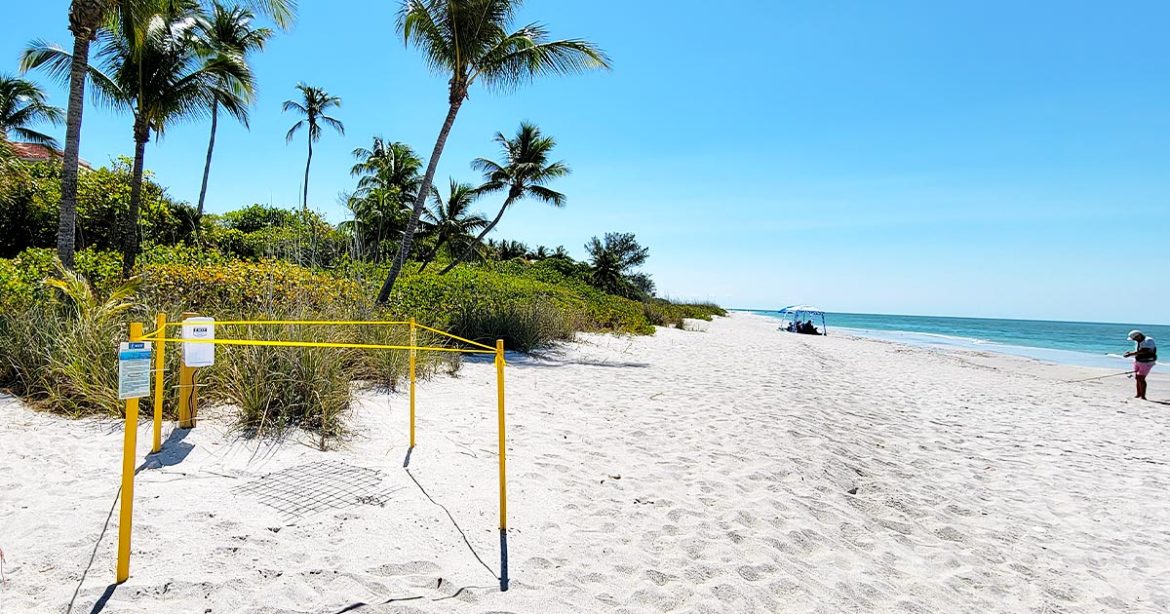Let us state up front. Here at Sanibel Barometer we don’t dislike TikTokers; just any of the idiotic trends in which some of them participate. And we definitely don’t like any trend on TikTok that’s endangering Sanibel sea turtles.
We’ll be the first to admit that there are plenty of fun and entertaining TikTok personalities who find their way to Sanibel Island and record engaging videos while they are here — but, as we all know by now, there’s a percentage of users on TikTok who are notorious for jumping on any dumb, dangerous, disgusting, or (in this case) environmentally disastrous “challenge” or “trend” that comes down the pike as a way of chasing “social media fame”.
Think: eating Tide Pods, shaving down their teeth, dancing on graves, licking public toilet seats for the #coronaviruschallenge, the #skull_breaker, or any of the concerning activities listed IN THIS ARTICLE.
RELATED: Join our BRAND NEW Sanibel + Captiva Island Art + Photography Group
ALSO RELATED: Connect with @sanibel_barometer on Instagram
The latest ridiculous ploy for views on TikTok is potentially endangering Sanibel Sea Turtles.
You see, one of the recent viral trends on TikTok is “How Deep Can I Dig“. It’s happening all over Florida and it’s centered around the idea that, “Hey, maybe I’ll get a bunch of views on my video if I record myself digging an outlandishly large and deep hole on the beach.“
Inspiring stuff, right?
So, these folks dig their big stupid hole, take their short stupid video, upload it to TikTok, and then go home. The problem: They just leave the hole on the beach and don’t fill it back up.
Leaving a big open hole on the beach can be dangerous for anyone walking along our beautiful beaches at night — BUT these open holes are ESPECIALLY dangerous for sea turtles.
Overall, there are only 7 species of Sea Turtle. The islands of Sanibel and Captiva are home to 5 of those seven species: Green turtle, Loggerhead, Kemp’s Ridley, Leatherback, and Hawksbill. Worldwide, six of the seven sea turtle species are classified as threatened or endangered due to human activities.
The oldest known sea turtle fossil is at least 120 million years old, making sea turtles some of the oldest creatures on the planet – they actually shared the planet with dinosaurs (which became extinct around 65 million years ago). BUT, over the past 200 years, the increasing threats caused by humans have been driving the dwindling sea turtle populations towards extinction.
Now that emerging TikTok trends have started endangering Sanibel sea turtles, the Sanibel Natural Resources Department has determined the mounting threat serious enough to necessitate the release an official Public Service Announcement addressing their growing concerns.
Keep reading below…
Here’s an example “Dig a Hole on the Beach” video from Destin, FL
@jordanthedrummerwb Hole #destin #florida #springbreak #bestfriends #beach #hole #digging #dig #foryoupage #foryou #fyp #LinkBudsNeverOff #OREOBdayStack #ocean #holestok ♬ original sound – Jordan Arnold
The Official News Release from the City of Sanibel Regarding the Trend on TikTok Endangering Sanibel Sea Turtles
Hey Sanibel Beachgoers! Let’s leave the digging to the turtles…
Long before beachgoers arrived on Sanibel’s pristine beaches, sea turtles have been coming ashore to lay their eggs.
After crawling out of the water, a female sea turtle uses her flippers to make an exhausting trek up the beach looking for a good spot to deposit her eggs. Once she finds a spot, she will spend hours digging, first creating a body pit and then a smaller egg chamber into which she will deposit her eggs. Immediately after laying the final egg, the turtle will use her back flippers to push sand over the exposed egg chamber and then throw and push sand backwards with her front flippers to pile sand on top of the nest. This step ensures the nest is protected and difficult for predators to locate. After the long and strenuous process, she crawls back to the Gulf. Nearly two months later, her hatchlings will emerge and make their own perilous trek to the sea.
Unfortunately, perhaps inspired by the impressive sea turtle or simply responding to a social media challenge, human beachgoers are digging bigger and deeper holes than ever before. But unlike the sea turtle who fills in the hole she has created, many beachgoers leave the beach without doing the same! Unfilled holes are severe safety hazards for humans, sea turtles, and other wildlife. A broken ankle (or worse) is a sure-fire way to ruin a perfect Sanibel beach day! And for sea turtles, young and old, anything that obstructs their path to or from the ocean can be deadly. Holes in the sand are especially harmful to sea turtle and shorebird hatchlings who can easily become trapped making them vulnerable to predators, dehydration, exhaustion, and death.
So what can YOU do to be a Sanibel Beach Hero? We’re glad you asked!
Leave the digging to the sea turtles. There are plenty of other ways to enjoy a beach day on Sanibel…swim, shell, birdwatch, & relax to name a few.If you must dig, take a lesson from the sea turtle, and fill it in completely before leaving the beach.If you notice a fellow beachgoer digging with fervor, politely remind them to finish the job and fill in their hole before they leave. DIGGING a hole is only HALF the fun!
If you encounter a hole that has not been filled in and you have some spare time, have at it and fill it in yourself. You’ll get a workout, and you might be a hero to a sea turtle hatchling!
If a hole is too much for you to handle, please report the hole to the Sanibel Public Works Department at 239-472-6397.
Finally, if you own or manage a beachfront property, please help us get the word out and share these “best behaviors” with your guests.
Thanks to all our Beach Heroes for following these tips to keep Sanibel’s beaches safe and enjoyable for humans & wildlife.
RELATED: SANIBEL PHOTOS: Blind Pass Beach Erosion
An Instagram post from the Marco Island Police Department addressing the dangers that digging holes on Florida beaches pose to sea turtles
Information on the Sanibel-Captiva Conservation Foundation’s (SCCF) Sea Turtle Program

Sea turtle monitoring on Sanibel originally began in the late 1950’s with Charles Lebuff and Caretta Research, Inc., making it one of the longest running monitoring programs in the country. The program was transferred to the Sanibel Captiva Conservation Foundation in 1992 when Caretta Research, Inc. disbanded.
Every year in late spring, loggerhead sea turtles arrive on Sanibel and Captiva for the nesting season. The SCCF Sea Turtle Program surveys 18 miles of beach, from the Sanibel lighthouse to Redfish Pass, every morning from April – October. Over 100 volunteers help with the daily search for tracks that the sea turtle left behind when she emerged from the sea the night before. Sometimes sea turtles go back to the water without laying eggs, which is known as a non-nesting emergence. If we determine that the turtle successfully laid eggs, the nest is watched over until the eggs hatch and there are signs of the hatchlings crawling to the Gulf. Storms, humans and predators may disturb or destroy the nests, reducing their survival. After the nests hatch they are evaluated to determine the number of hatchlings that successfully emerged.
To leave you with some Sanibel Island TikTok fun…
@officialmrgrouchy Twerking on sanibel island 😂😂#fyp #InTheHeightsChallenge #grinch #hoover #beach ♬ Freek-a-Leek – Petey Pablo
If you’re not following @sanibel_barometer on Instagram, then you’re missing out on half the fun!
Disclaimer: Information is harvested (at time of publication) from publicly available sources and is deemed reliable but not guaranteed – any editorial content is solely opinion-based – availability, prices, details, and etc are subject to change or withdrawal at any time and for any reason. All dimensions are approximate and have not been verified. All data should be independently verified.
